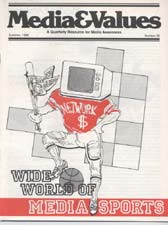Sports Reporting Reflects Each Passing Era
|
This article originally appeared in Issue# 36
|
When The American Farmer, the first American sports magazine, was founded in 1819, it covered fishing, hunting, shooting, bicycle races and the philosophy of sport. Sports Illustrated, today's premier American sports weekly, has a circulation of 2.8 million. It covers fishing, hunting, shooting, bicycle racing and the philosophy of sport, as well as a few additions such as baseball, football, basketball, hockey. Esoteric extras like rock climbing and falconry add to the mix.
Public interest in sports and today's media-driven fan network are taken for granted, but indeed, it might be argued that regional leagues and competitions were a media creation, since they required widespread publicity to raise interest. Daily newspapers began to supplement accounts in weekly sport specialty magazines as early as 1835, but the sports section as we know it today developed out of William Randolph Hearst's New York Journal which attempted to top the sports reporting of its competitors at the turn of the century.
Traditional sports commentary hit its stride after World War I, as prosperity, the beginning of radio coverage and the growth of a sports star system fed a sporting boom. Television's sports debut in 1939 was inauspicious. Viewers said the players in a Princeton-Columbia baseball game captured by a single static camera on a platform looked "like white flies" and the ball was virtually invisible. But savvy camera operators mastered the art of anticipating the action and technicians created such standard enhancements as slow motion and the instant replay. Television's flexibility and intimacy promoted the growth of such sports as football and basketball where the best seat in the house was often in front of the tube. When living room spectators began to know the score, sports writers found that they needed to add a special touch to stay in business. Analysis, criticism and color reporting filled the gap. As Jim Murray of the Los Angeles Times (perhaps the nation's best sports columnist) once put it: "Sportswriting used to be 80% 'Gee whiz!' Now it's 80% 'So what!"
"Why would anyone want to watch a bunch of white flies?" critics asked about the first televised baseball game, a 1939 contest between Princeton and Columbia.
Writing in Journalists Today, author David Shaw points out that readers already up on standings demand more than ever from sports journalists. "After watching the game on television," comments Dick Young of the New York Daily News, "[the fan] is not going to take your word for anything. TV just whets his [sic] appetite. Now he wants the real lowdown — and you'd better have it."
Commentary, profiles, investigative reporting and sophisticated reviews of sports negotiations and economics have all broken new ground for a system in which uncritical writers used to absorb the view from the press box, cobble up their game write-ups and go home. Reporters scrambling for new angles have tarnished the halos of sports heroes, whose squabbles, drug busts and contract hassles provide controversy for the evening news as well as the sports pages. In the meantime, new media such as cable sports network ESPN and recorded VCR programs, even computerized information banks with automatic call-up of sports statistics widen the option of sports fans.
With all the added hoopla, some things don't change, however. Office workers may go home early for the World Series night game instead of gathering around the department radio. But the winners still clean up after the office pool that precedes the instantaneous technicolor transmission. And boys — and girls — still have sore jaws every summer as they chew bubble gum from that great American information source — baseball cards.



